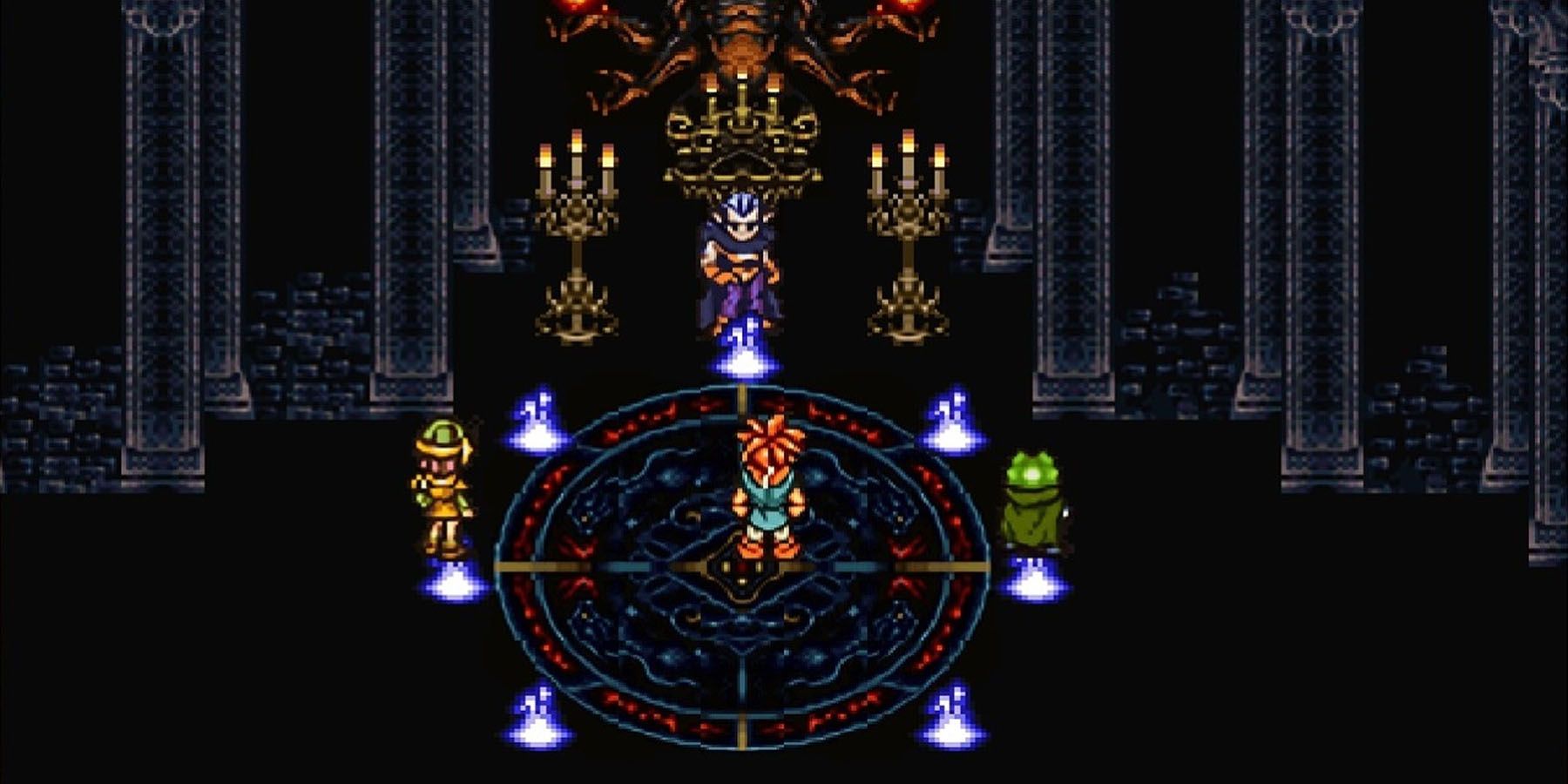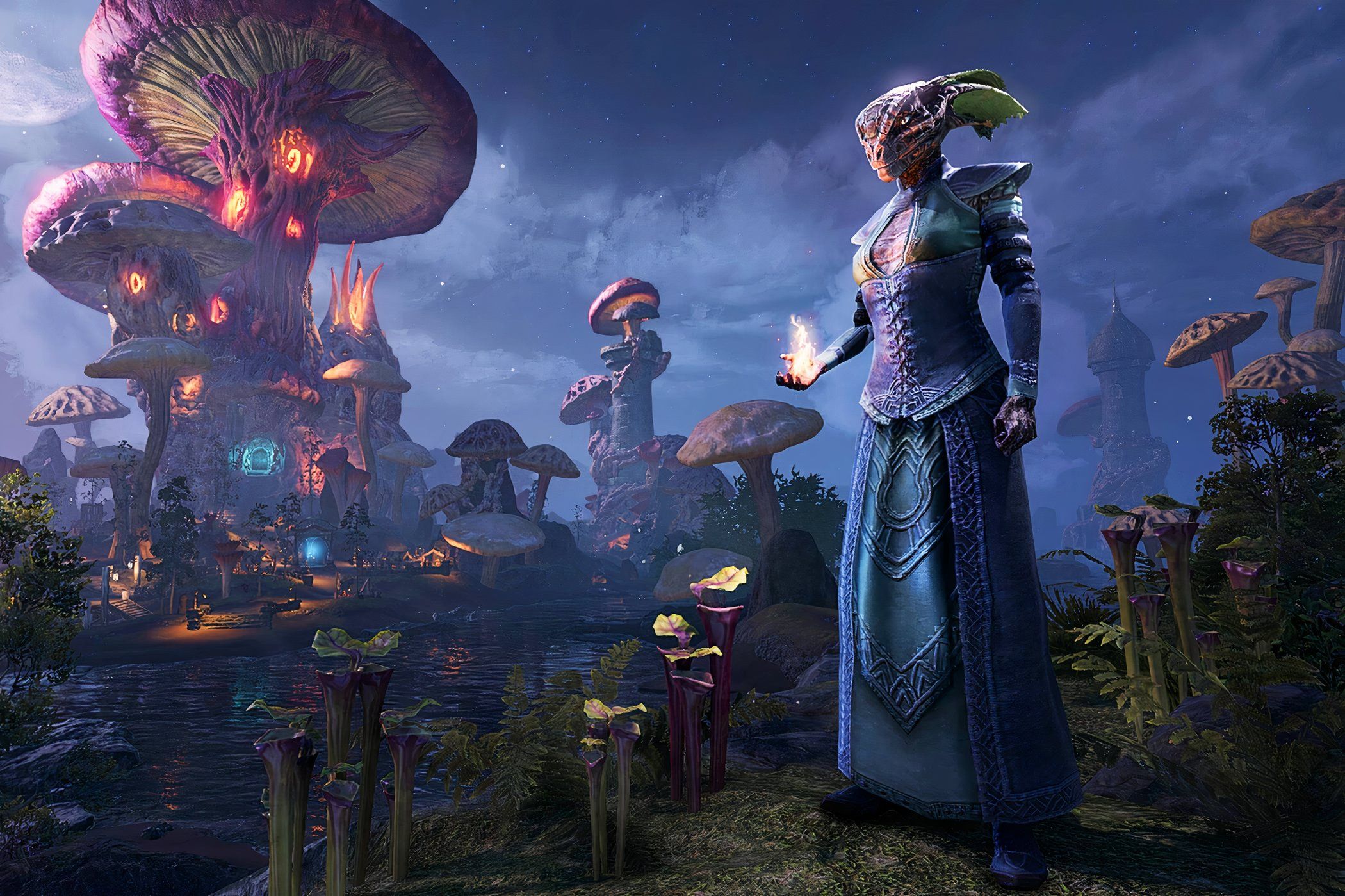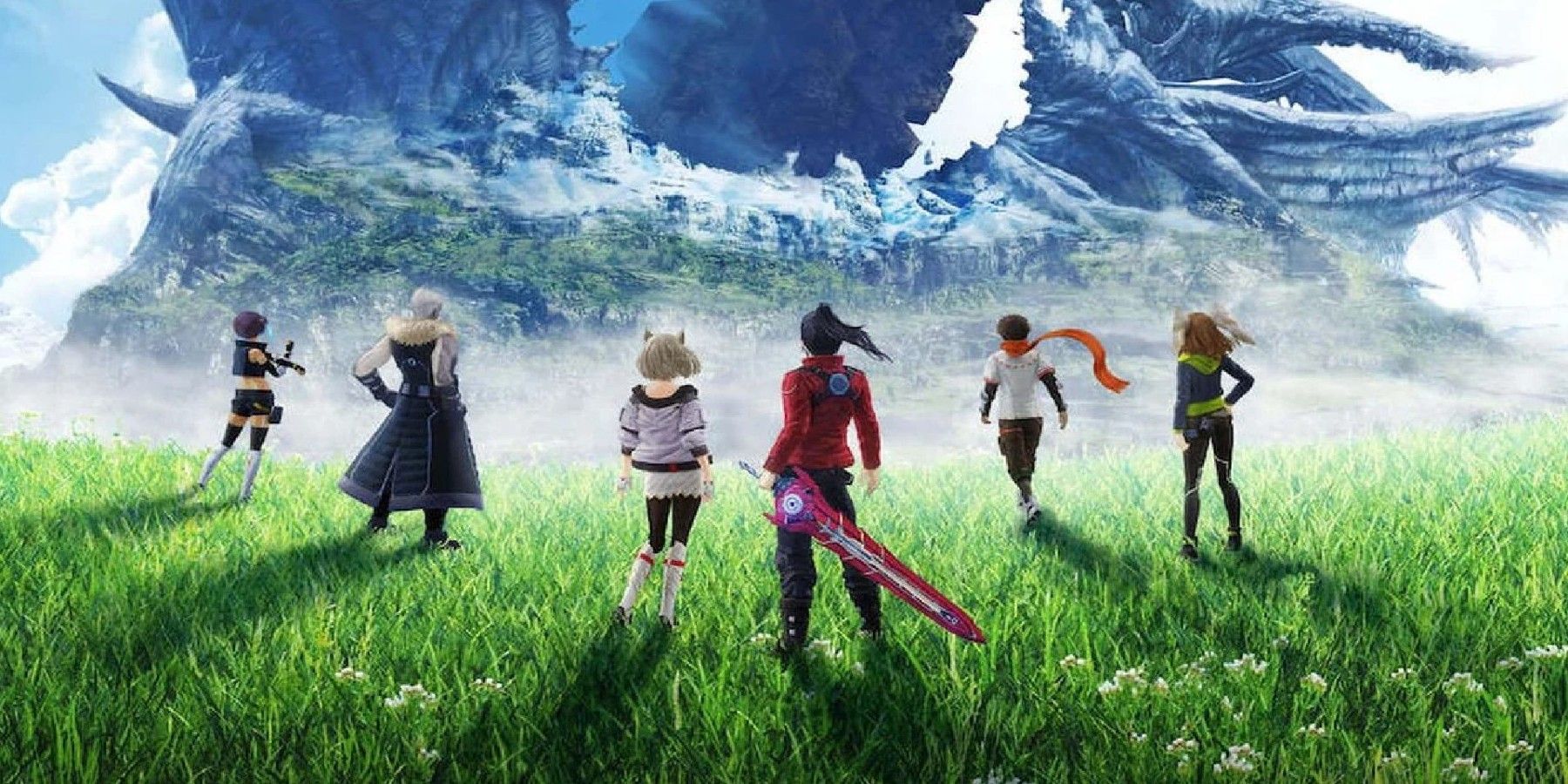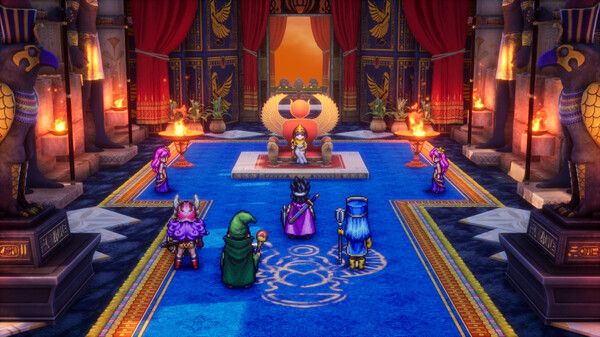Summary
- Chrono Trigger is arguably the best entry point to JRPGs with captivating story, characters, and gameplay in a package that won’t overwhelm.
- Larger franchises like Dragon Quest, Persona and Final Fantasy are well known for a reason and all offer great jumping-on points.
- Modern options like Xenoblade Chronicles, Fire Emblem, or Nier: Automata offer unique experiences and modern sensibilities.
Japanese roleplaying games, or JRPGs for short, are experiencing a second golden age. It’s the perfect time to give this storied genre a try, especially if you haven’t dipped your toes in before. If you don’t know which quest to take on first, I have you covered with this nifty guide.
Start With Chrono Trigger
While it feels counter-intuitive to recommend starting out with a 30-year-old game, there’s simply no better entry point to JRPGs than Chrono Trigger.
It’s a game that has everything: an easily digestible and emotionally riveting story, an unbeatable cast, awe-inspiring locales, and a soundtrack that’s nothing short of perfect. It’s also the best depiction of the late Akira Toriyama’s art style in the 2D era, so Dragon Ball fans are in for a real treat.
Chrono Trigger is also breezy and beginner-friendly. Its breakneck pacing means you’re never left lingering or grinding, and the run time comes in at an approachable 25 hours. It helps that battles play out seamlessly on the map rather than through random encounters, and many can be skipped altogether. Also, the largely linear character and equipment progression helps teach first-timers JRPG basics before letting them express themselves in the end game.
The catch is that Square Enix hasn’t ported the game to any current or last-gen consoles despite constant fan demand. The best option at present is the great PC port featuring the updated script from the 2008 Nintendo DS re-release. You can also play it on your phone or through emulation, if you’re inclined towards either.
But if you’re only willing or able to play on modern consoles, Chrono Trigger isn’t on the menu, to the great shame of its publisher. Maybe this being the game’s 30th anniversary will change things. (Side note: avoid the PlayStation 1 port as it’s laden with long load times.)
Chrono Trigger was the game that hooked me on the genre over two decades ago when all I knew was Pokémon, and I’m shocked at how fresh it feels every time I bi-annually replay it. I feel confident in saying it’ll be a similar eye-opener for others, and even if you don’t play it first, it should be on your must-play list.
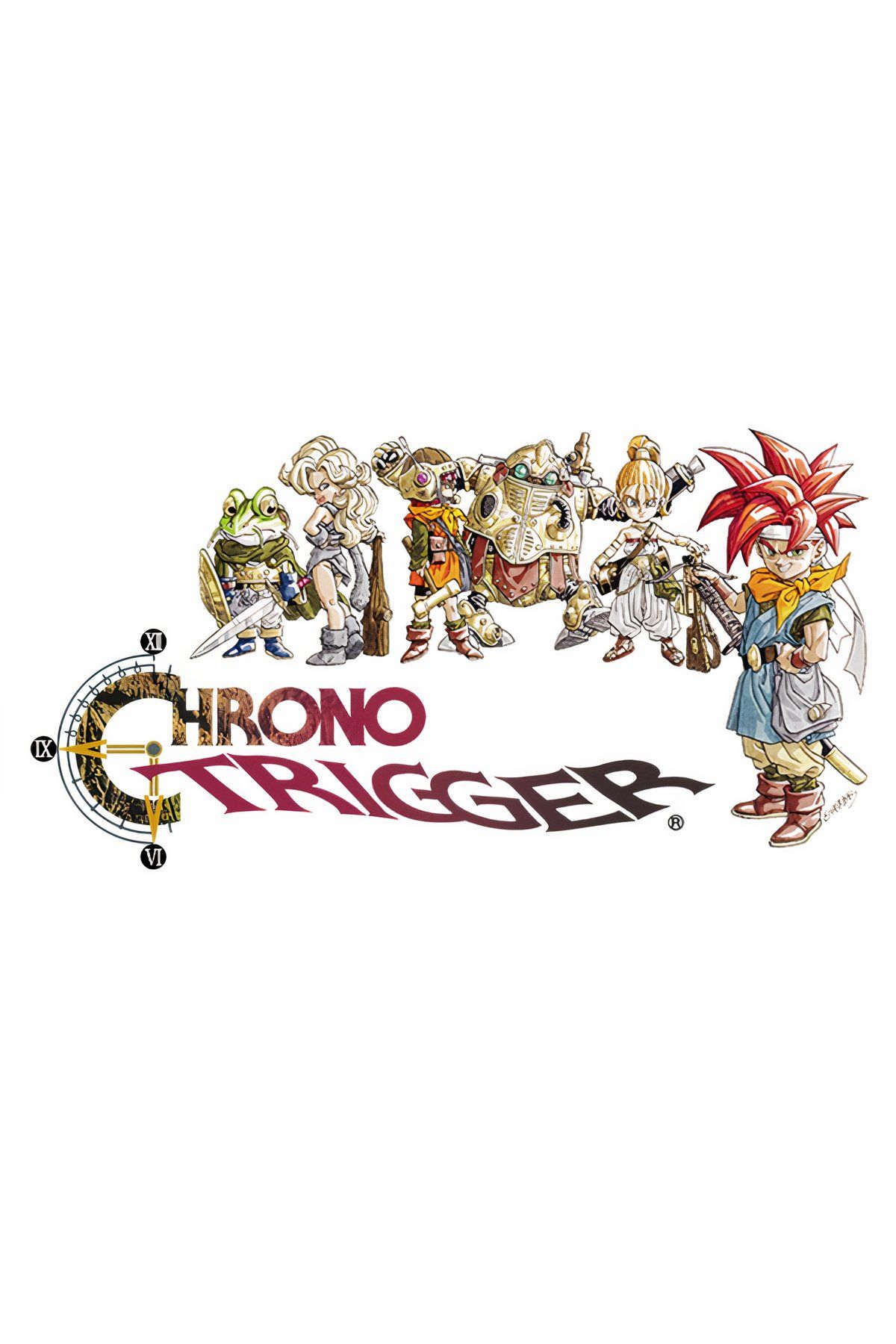
Chrono Trigger
Consider Trying These Mega Franchises First
Despite my top recommendation hailing from 1995, most players will probably feel more comfortable starting with modern games before digging into older titles that tend to be more obtuse and abstract.
JRPG franchises are often anthologies, meaning each entry is a self-contained story that shares motifs and iconography rather than continuity and universes. You can therefore jump in wherever you please, which is part of what makes Final Fantasy, Dragon Quest, and Persona perfect starting points.
If you’re looking for a classic turn-based RPG, Dragon Quest XI is the most authentic contemporary take on the formula. Your party members (one of the best squads since Chrono Trigger) have huge move lists to build strategies from, there’s an expansive world map to traverse, and towns are littered with flavorful NPCs to speak to. It does all this with extreme attention to detail and storytelling that revels in the fun of its crude whimsy before it rips out your heart multiple times over. It’s the game that made Dragon Quest a hit in the West for a reason.

Dragon Quest XI S: Echoes of an Elusive Age
Persona 5 Royal and Persona 3 Reload are both excellent entry points if you’re looking for an anime social simulator alongside bouts of snappy turn-based combat. These games see you living out roughly a year of a transfer student’s life day-by-day, balancing their school life and demon-thrashing duties. The art direction and music is so stylish that it puts the likes of Paris Fashion Week to shame. If this all sounds good, but you don’t know where to start, here’s a cheat sheet: go for Persona 5 Royal if you love city living and Persona 3 Reload if you want darker overtones or a shorter playtime.
Alternatively, Metaphor: ReFantazio—the Persona team’s most recent game—is a political thriller built upon a streamlined version of the Persona calendar formula. It was a big winner at game award shows last year for its narrative chops and deep combat systems, though by that very same mark I feel it’s better experienced once you’ve come to grips with the ins and outs of JRPG strategies like buffing, debuffing, status effects, and character building. The game is pretty tough to overcome without utilizing all its systems.
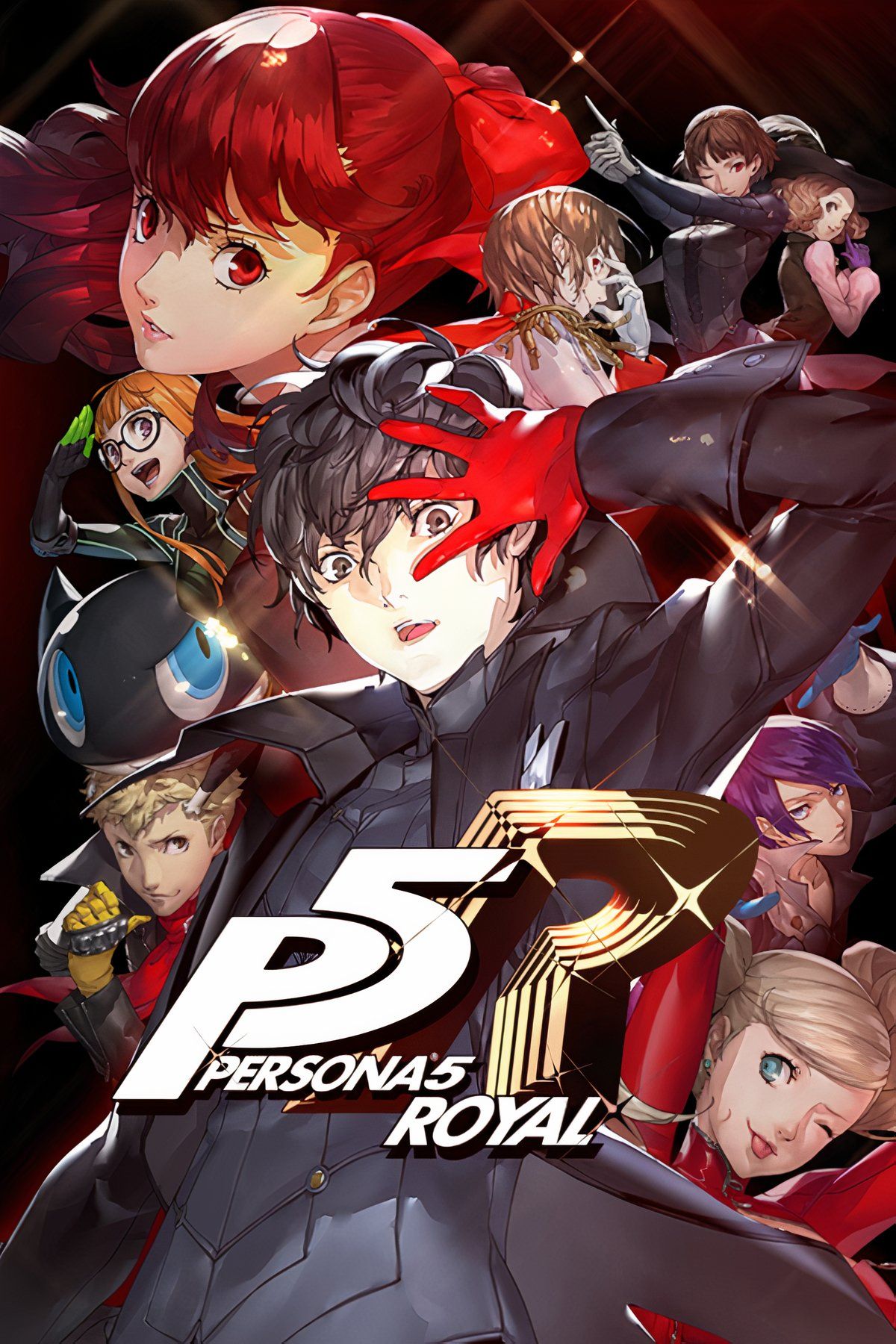
Persona 5 Royal
Final Fantasy is a tougher franchise to tackle in a guide like this, given just how many directions it’s taken in the past few years alone. On the one hand, the Pixel Remaster series features excellent remasters of the first six games, though despite many quality-of-life options they still show their age. They’re individually cheap though, so if you want to try your hand at Final Fantasy IV or VI, that’s the best way to do so.
I absolutely adore Final Fantasy VII Remake and Rebirth, and their hybrid of action and menu-based combat is perhaps the greatest innovation in modern JRPGs. At the same time, their approach to narrative is greatly enhanced by an understanding of the original game. The final part of the trilogy is a few years off, so you have plenty of time to circle back to these alongside a playthrough of Final Fantasy VII.
Another avenue to join the Final Fantasy fandom is through Final Fantasy XIV, a massively popular MMO now five expansions deep. Committing to an MMO takes a lot of time and requires a monthly subscription, though you can play the base game for free to see if you like it. It’s not the best gateway to the genre of JRPGs, but if you get invested, it may be the only one you need.
Also, consider that you may want a special mouse if you’re going to play Final Fantasy XIV on PC (trust me, it’s a true game-changer).
Other Great Starting Points
There are countless other modern starting points as well, offering different flavors of gameplay. Here’s a smattering of those options.
If you own a Nintendo Switch, the Xenoblade Chronicles series is available in its entirety on the platform. Their MMO-styled combat is generally easy to pick up yet has an endlessly high skill ceiling. I’d say the original Xenoblade Chronicles: Definitive Edition is the most approachable of these, though you can also start with Xenoblade Chronicles 2 and circle back to the first entry after, if you prefer (just be ready for quickly overwhelming mechanics).
If you want the best characters, Xenoblade Chronicles 3 has you covered, though that game relies heavily on an understanding of both previous games. Alternatively, the recently released Xenoblade Chronicles X: Definitive Edition stands entirely on its own and gives you mechs to pilot around its open world.
Another Nintendo staple worth investing in is Fire Emblem, a turn-based strategy franchise worthy of the number of roster slots it’s earned in Super Smash Bros. You may be typing an angry retort already, but I think you’ll agree once you experience the social simulation and class customization of Fire Emblem: Three Houses, or the expansive gameplay mechanics that make Fire Emblem: Engage so, well, engaging. It’s also been long enough since that entry that another is likely on the near horizon, perhaps alongside the Switch 2.
If action and anime are your cup of tea, NieR: Automata is for you. It’s a great middle ground between skill-based execution and stat modification. The flashy combos and iconic character designs are all wallpaper for creator Yoko Taro’s bonkers mind-trickery, though. There’s no other story in gaming told quite like this, save for its predecessors. If you end up loving Automata, try out its remastered prequel NieR Replicant ver.1.22474487139… (yes, that’s really the title), which swaps out a post-apocalyptic science fiction setting for something a little more fantasy… kind of.
Indie developers—usually based outside Japan—have picked up a lot of the slack in pushing the genre forward as well. Undertale is the best known of these, with creator Toby Fox masterfully deconstructing JRPGs to ask questions about the player’s morality. There’s also Omori, a gut-wrenching tale that dives deep into themes of mental health, including how it frames traditional turn-based combat mechanics.
If you want a JRPG that plays things straighter and without the emotional baggage, Sea of Stars and Chained Echoes are worth a look, though I would recommend Chrono Trigger as a better starting point (both take heavy inspiration from it).
Alternatively, Start With the Remastered Classics
I’ve largely kept this list to newer games, but there’s also merit in dipping your toes right into the classics. There’s a seemingly endless stream of remasters and remakes of 1990s golden era JRPGs. These could be obscure games that never made it to the West like LIVE A LIVE, revivals of long-dead franchises like Suikoden, or meticulous recreations of stone-cold classics like Dragon Quest III HD-2D Remake.
Part of why there’s never been a better time to get into JRPGs is because modern hardware—especially the Nintendo Switch—has accrued a vast library of re-releases. Strong sales mean this trend shows no signs of stopping, as evidenced by every Nintendo Direct being filled to the brim with returning heroes.
Re-releases tend to come packed with quality-of-life improvements, orchestrated soundtracks, and visual changes (though these can sometimes miss the mark). This helps make them more palatable to today’s gamers. Many come in franchise bundles, too, sweetening the deal. Alternatively, you can always emulate games to play them in their original form without shelling out for pricey physical copies.
If there was one specific ‘90s classic I’d recommend to newcomers outside of Chrono Trigger, it’s Super Mario RPG. It’s specifically built to simplify JRPG mechanics down to a level that anyone can play, yet it’s not so easy as to be patronizing. The recent one-for-one remake for the Switch is a beauty as well. Some would probably point you towards Paper Mario: The Thousand-Year Door instead, and I concur it’s a fantastic game, but Super Mario RPG is more digestible and, if it matters, family-friendly.
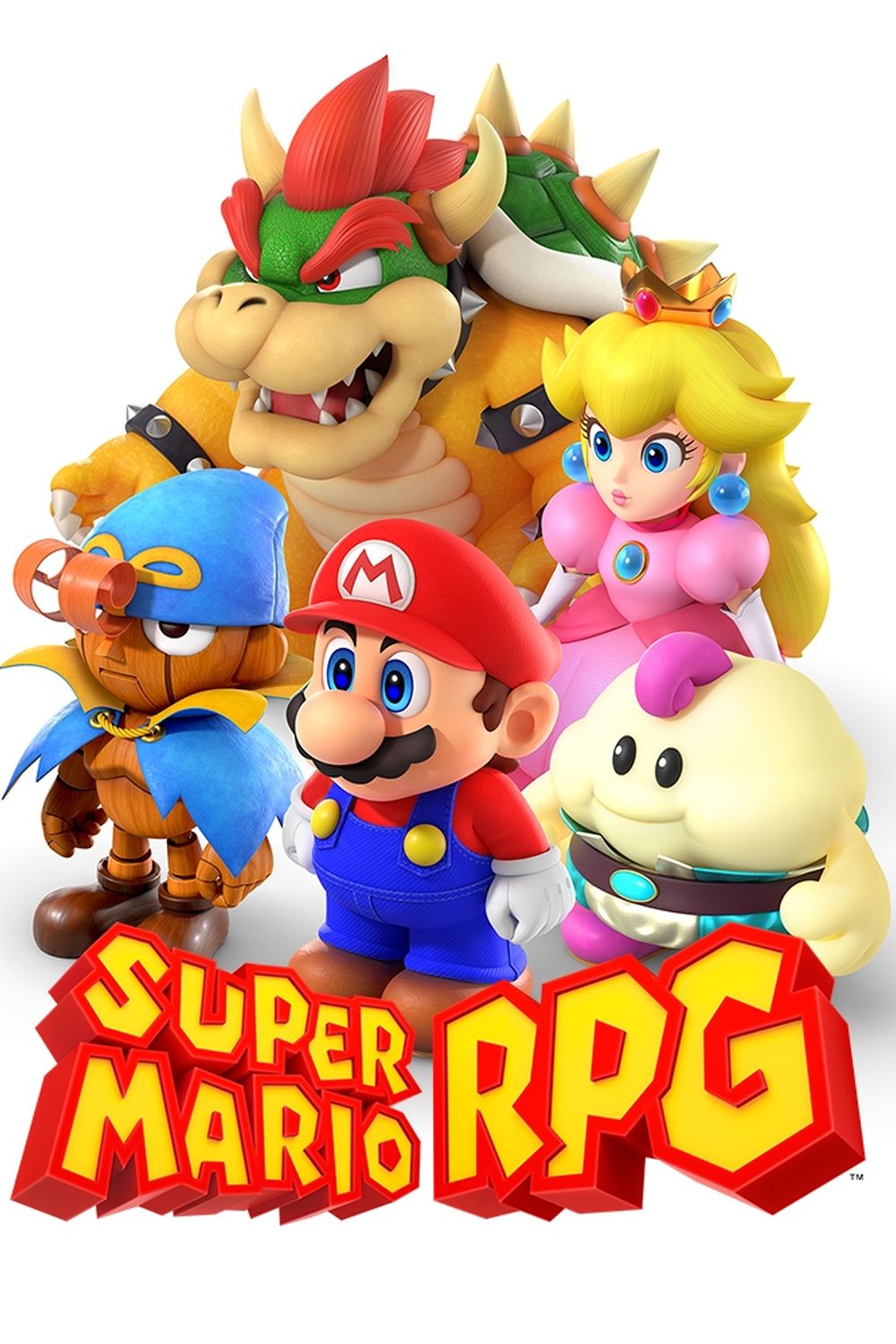
Super Mario RPG
There’s No “Wrong” Starting Place
There simply isn’t the space in this article to highlight every great JRPG series, and frankly, I’ve probably already overwhelmed you with options. The truth is that there’s no inherently wrong starting point. If there’s a JRPG that piques your interest, that’s the one to go with.
The JRPG genre casts a pretty wide net that ranges from strict turn-taking to hardcore action, and everything in-between. There’s something for everyone, and the real quest is finding which styles suit you.


